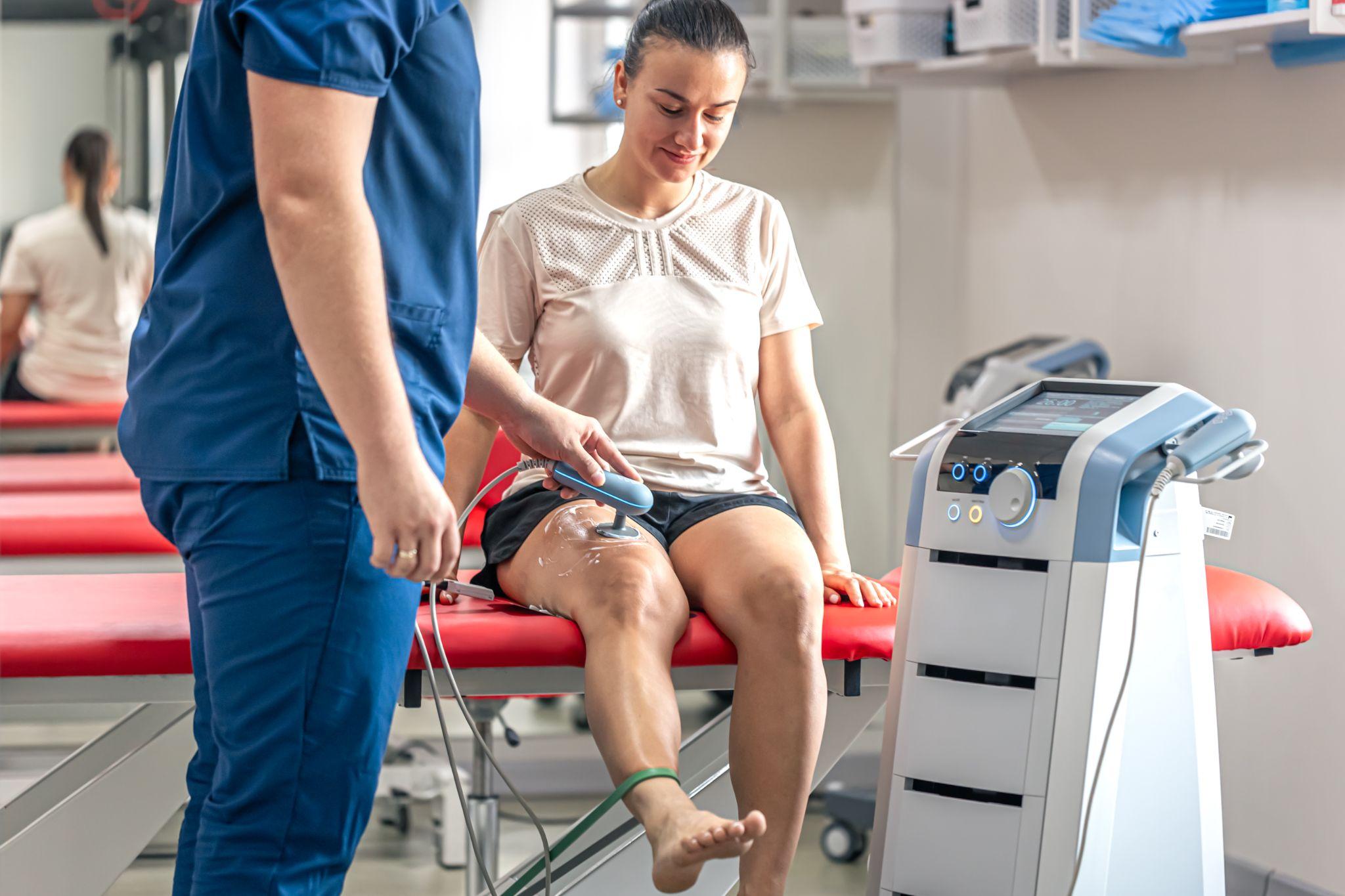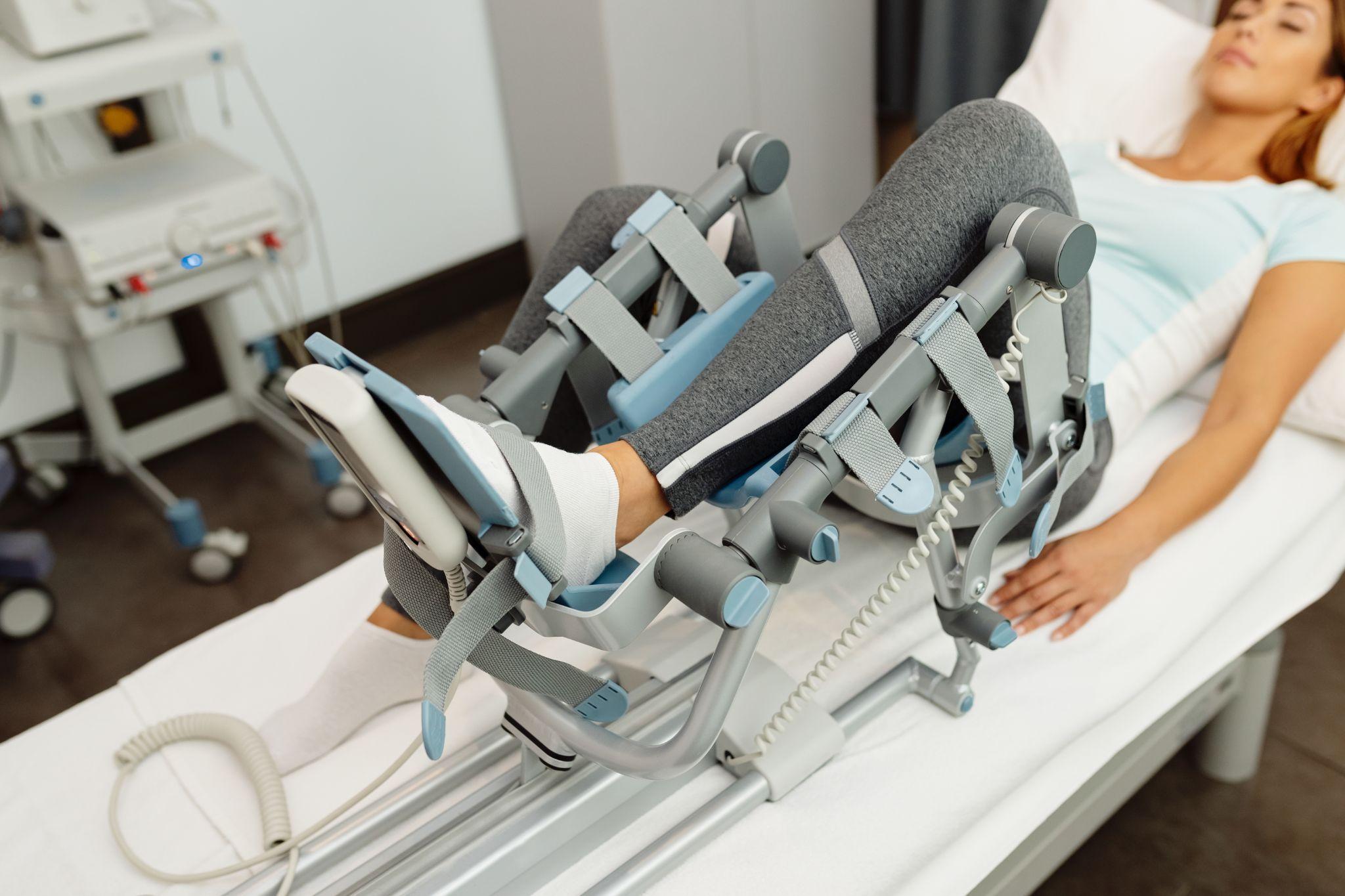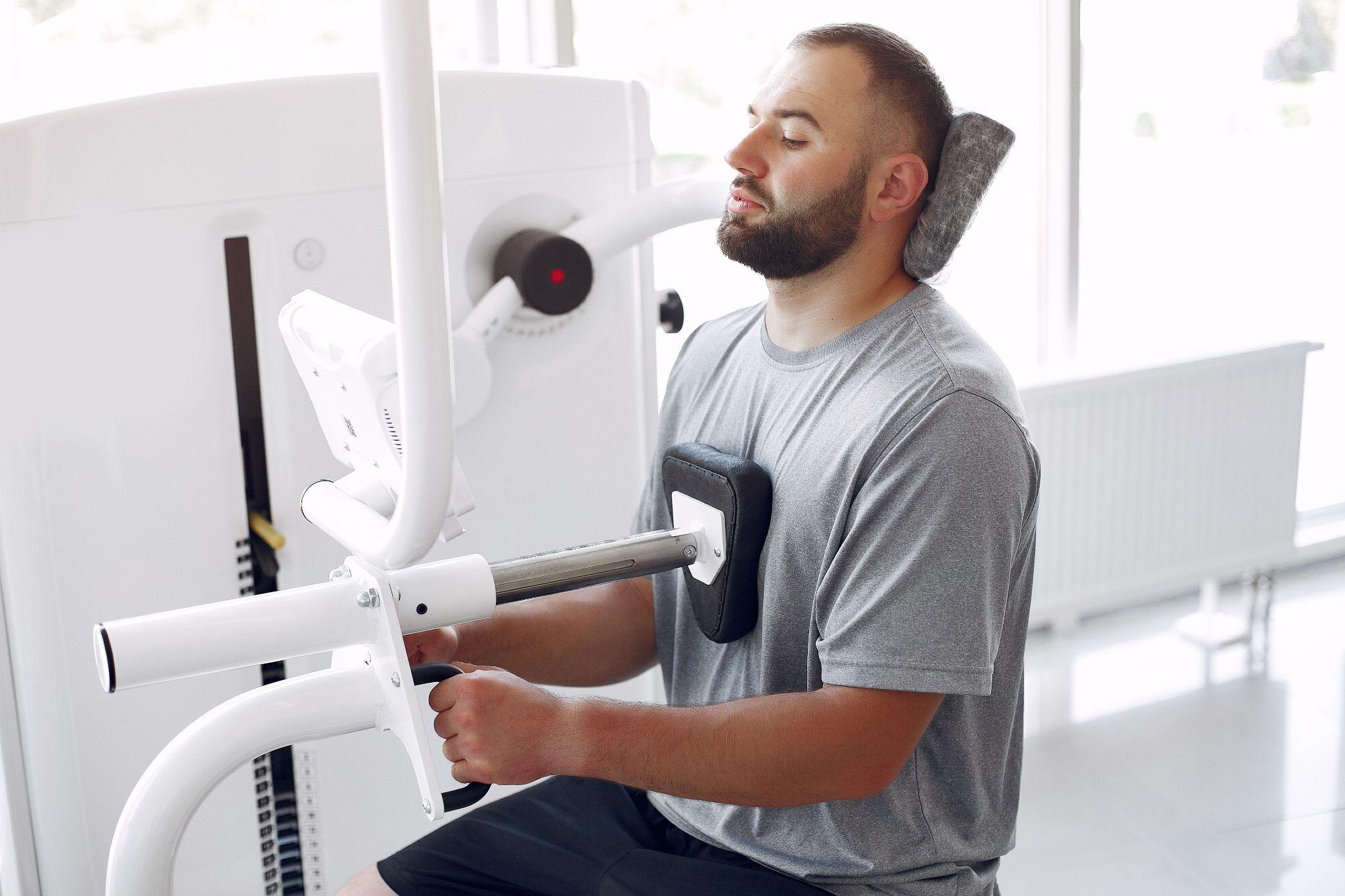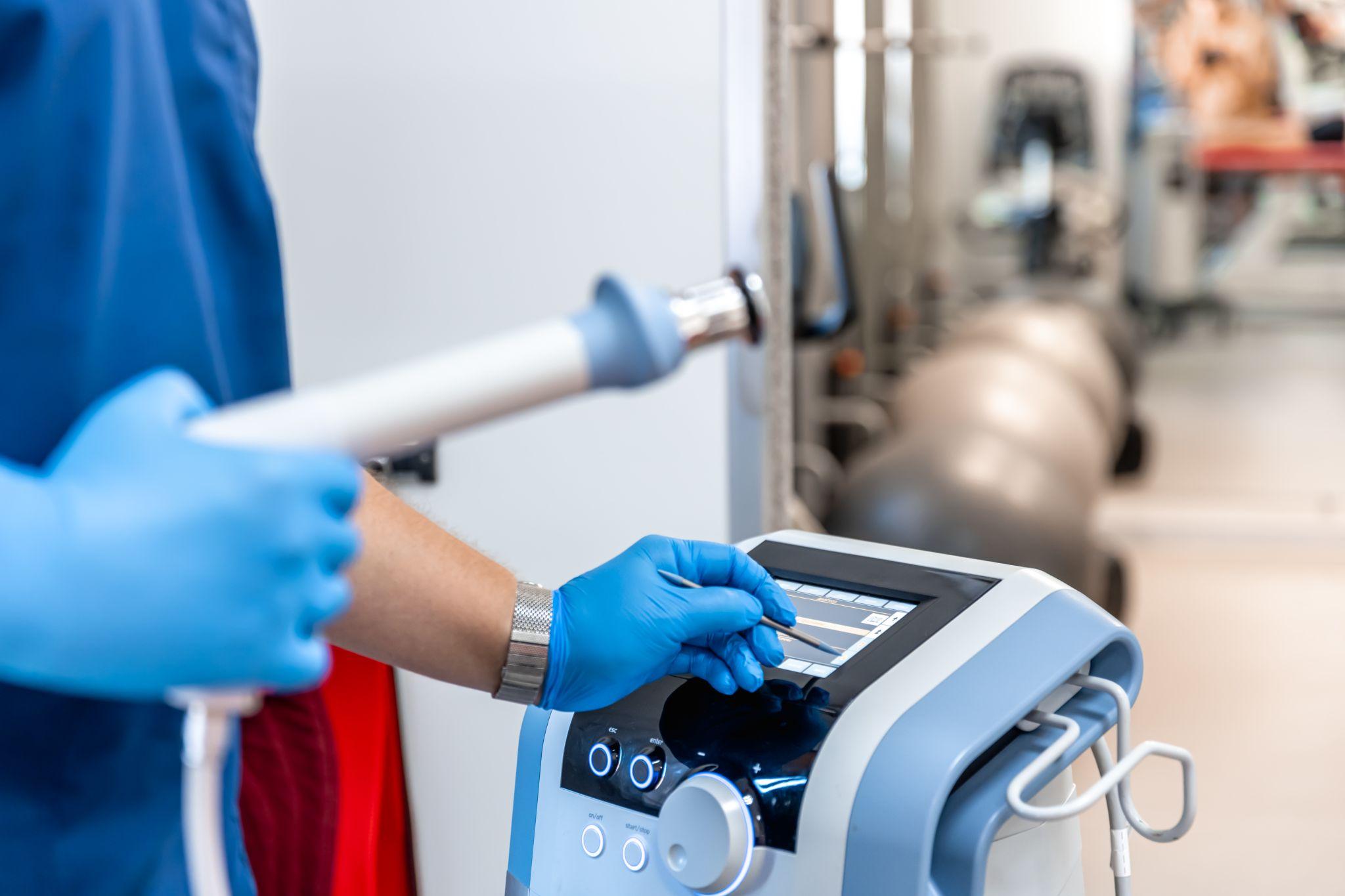Understanding CPM Machines for Knee Rehabilitation

The main goal of a CPM machine is to prevent stiffness and maintain flexibility in the knee joint after surgery or injury.
Recovery from knee operations such as ACL reconstruction, meniscus repair, or total knee arthroplasty is usually challenging. Maintenance of mobility, flexibility, and adequate circulation is important to recover quickly and smoothly. Swelling, pain, and stiffness are common obstacles that delay recovery if not prevented.
One of the newer aids to rehabilitation employed is the Continuous Passive Motion (CPM) machine. The CPM machine passively moves the knee joint without requiring the patient to exert active effort, restoring the flexibility and preventing stiffness during the early rehabilitation phase.
This blog will make everything simpler for you to understand - how CPM machines work, how they assist, how to use them safely with precautions, and how they supplement traditional physical therapy for the best recovery of the knee.
What is a CPM Machine?
A Continuous Passive Motion (CPM) machine is an electric device that gradually moves the knee joint through a predetermined range of motion in a slow and controlled motion.
CPM devices were initially described in the 1970s as post-surgical rehabilitation therapy. They were initially made to decrease stiffness in the joint and assist with recovery for patients who had knee surgery. CPM devices have progressed up to now, with increases in complexity, convenience, and availability for hospital and home use.
Structure and Function
A CPM device consists of:
- A motorized bed that moves the knee in back-and-forth motions.
- Adjustable calf, thigh, and foot braces to allow proper alignment.
- Speed, angle, and time controls for the movement.
How Does a CPM Machine Work?
They are commonly prescribed after knee replacement surgery, ACL reconstruction, meniscus repair, or fracture fixation to promote early movement.

They are commonly prescribed after knee replacement surgery, ACL reconstruction, meniscus repair, or fracture fixation to promote early movement.
The CPM machine passively bends and straightens the knee joint, i.e., the patient does not contract his own muscles. Here's how it works:
- Patient Positioning: Patient lies on a bed with an operated limb inside the machine.
- Controlled Motion: The machine slowly bends and straightens the knee through a pre-programmed range of motion.
- Adjustable Settings: Speed, angle, and duration are programmable according to the surgeon's or physiotherapist's prescription.
- Therapeutic Effects: Continuous movement increases blood supply, reduces swelling, discourages stiffness, and maintains the lubrication of the joint.
For example, a knee replacement patient can be trained on the CPM machine 2–6 hours a day. The machine will gradually move the knee, allowing tissues to heal without overloading the joint.
Benefits of Using a CPM Machine
CPM therapy does have some significant benefits for knee rehabilitation following surgery:
1. Prevents Joint Stiffness
Fluid, continuous motion avoids scarring and stiffness generally associated with surgery.
2. Reduces Swelling and Enhances Circulation
Passive motion improves blood and lymphatic fluid flow, reduces swelling, and promotes healing.
3. Promotes Greater Recovery
By maintaining joint mobility and stimulating tissue repair, CPM therapy can return function earlier than passive rest.
4. Reduces Pain and Discomfort
By moving the joint, stiffness is prevented, and pain control is made easier in early recovery.
5. Increases Range of Motion
Slow, controlled motion allows the knee to regain normal flexibility and working motion.
When to Use a CPM Machine?
CPM therapy is usually indicated in patients with:
Knee replacement surgeries, especially partial replacements.
- Recovery following ACL repair or cartilage surgery.
- Limited ability to perform active exercise in the early stages of recovery.
No, CPM machines are not used for every patient. It strictly relies on the surgeon's analythe sis, type of surgery, and individual healing requirements.

The machine allows precise adjustments in the degree of motion (flexion and extension), depending on the stage of recovery.
Safe Use of a CPM Machine
Safe use must be ensured to achieve maximum benefit from CPM therapy:
- Follow Medical Instructions: Use the machine exactly as instructed by your doctor or physiotherapist.
- Correct Positioning: Position the knee in the proper position within the machine to prevent straining.
- Clean and Maintain: Clean the gear and inspect it on a regular basis to ensure that it remains in good functional condition.
- Start Slowly: Start short sessions (1–2 hours) and gradually increase as advised.
- Monitor Symptoms: Avoid using the machine if you feel acute pain, swelling, or abnormal discomfort and consult your doctor at once.
Safety Tips
- Don't nap when operating the CPM machine unless advised.
- Don't overuse the machine—more isn't always better.
- Use CPM in conjunction with light, active physical therapy for optimal benefits.
CPM versus Physical Therapy
Equipment that is beneficial but not a replacement for physical therapy.
- Physical Therapy: Active exercises to improve strength, balance, and function.
- CPM Therapy: Utilizes passive motion to keep flexibility and prevent stiffness, especially during the early stage of recovery.
- Blending CPM therapy with traditional physical therapy gives a balanced method—early motion on the CPM machine and late strength and function on active rehab.
Are CPM Machines Helpful?
CPM effectiveness research delivers inconclusive outcomes:
Several studies yield improved early mobility, reduced pain, and faster initial recovery. Other studies yield insignificant long-term benefits when utilized alone without physiotherapy.
It is widely accepted that CPM devices function optimally when applied correctly, with medical supervision, and part of a comprehensive rehabilitation program. Results depend on the type of surgery, age, and adherence to guideline-based care.

One of the major benefits of CPM use is the prevention of joint stiffness or contractures that can develop when a joint remains immobile.
Home Recovery Tips in Addition to the Use of CPM
In addition to maximizing the effectiveness of CPM therapy, incorporate these home recovery routines:
- Establish a routine Exercise Program: Follow your care team's exercise regimen and use of CPM.
- Control Swelling: Apply ice packs or compression as directed.
- Balanced Nutrition: Consume a high-protein, calcium, and vitamins diet that the body needs for healing tissues.
- Hydration: Take adequate water to promote healing.
- Follow Medications: Take pain medicine and other medications on a regular basis as instructed.
- Monitor Progress: Reassess your range of motion, swelling, and overall comfort and return for follow-up.
These are habits to complement CPM therapy and allow faster, safer recovery.
Conclusion
CPM machines are an excellent machine for initial knee rehabilitation. They prevent stiffening of the joint, reduce swelling, and allow greater mobility to the joint, thereby making rehabilitation and pain easier. Proper usage, as per medical advice, and simultaneous active physical therapy are nonetheless the best predictors of the success of CPM treatment.
If you or a member of your household is a post-replacement knee recovery patient, speak with your orthopedic surgeon to see if CPM therapy is right for you. CPM machines, with proper guidance, can significantly enhance post-surgical recovery and help you regain mobility safely.
Frequently Asked Questions
What does a CPM machine do after knee surgery?
It gradually swings the knee joint to minimize stiffness and allow faster healing.
How many hours daily am I to use a CPM machine?
CPM treatment is usually ordered for 2–6 hours daily, based on your doctor's advice.
Does it hurt to have a CPM machine?
No. There is some slight discomfort that cannot be avoided, but the machine will not cause stabbing pain. Stop and talk to your doctor if you hurt.
Can I get a CPM machine at home?
Yes. When used under the supervision of a physician, most CPM units may be used safely at home.
Do CPM machines replace physiotherapy?
No. CPM machines supplement physiotherapy by maintaining flexibility until active exercise is feasible.